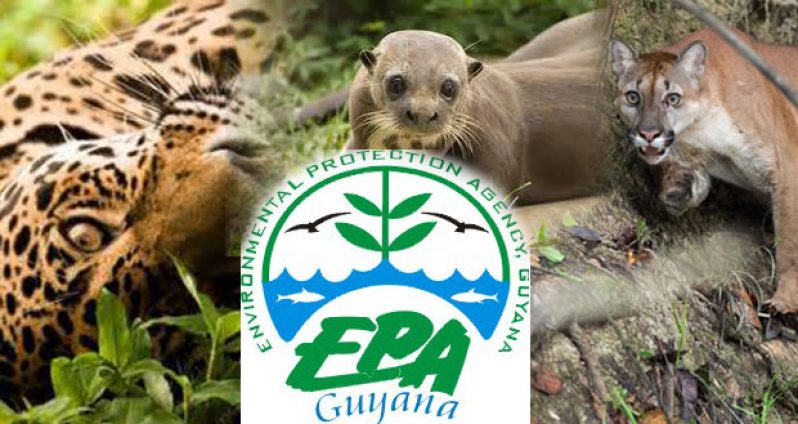Spotlight on Compliance and Enforcement
The Environmental Protection Agency (EPA) will celebrate 20 years of its existence on 5th June, 2016, having been established with the passing of the Environmental Protection Act (EP Act) on World Environment Day, 1996. This week, as we continue our focus on the EPA, we will take a look at its work in compliance and enforcement. As the number of projects being permitted by the EPA continue to increase, the need for a Division dedicated to compliance and enforcement became apparent. As such, in 2013, the EPA established a new Environmental Management Compliance Division.
A key focus of the new Compliance Division is to ensure that permitted projects comply with the conditions of their Environmental Permits or Authorisations. In cases of non-compliance, the EPA enforces the EP Act and its attendant Regulations. The Compliance Division is also responsible for enforcing the new Litter Enforcement Regulations (2013); in fact a new Litter Enforcement Unit was set-up in 2104, specifically to implement the Regulations.
The Compliance Division uses a holistic approach to compliance and enforcement by integrating water quality, hazardous waste management, and coastal zone management perspectives, as well as, geographical information systems into making its analysis of recommendations for solutions to issues that emerge in relation to compliance with the EP Act and its Regulations.

Monitoring
Monitoring is a core activity of the Compliance Division; facilities and operations authorised by the EPA are assessed for compliance with the conditions set out in the Permit issued to them. If there is non-compliance, then the Division recommends the required corrective actions and provides guidance to Permit holders in cases where they encounter difficulties. The EPA’s approach is to encourage projects to demonstrate environmental responsibility through self-compliance and self-monitoring; the latter is also a requirement.
Enforcement
Many operations or projects existed before the EPA was established, and as such, are required to register with the EPA so they can be brought into its environmental authorization process. However, there are still operations that are yet to register and are operating unauthorized. In cases where an environmental complaint is made to the EPA against a non-permitted operation, it is investigated with the goal of resolving the complaint and having the operation authorized. As such, the EPA welcomes reports by persons that are affected by any operation, since it provides an opportunity to bring the operation into compliance with the environmental regulations.
When a report is made against an operation, the site of the operation is visited by the EPA, to determine if the complaint is valid, and if so, to provide measures to reduce the nuisance caused. The EPA usually communicates its recommendations in an Enforcement Notice. In instances where the risk posed by the operation is so severe, that it affects the health of surrounding residents, a Prohibition Notice is issued against the offending activity, stating explicitly that the activity must cease. It should be noted that a permitted operation may also be issued with an Enforcement Notice or Prohibition Notice if any non-compliance is not rectified.
Enforcement against Littering
To enforce the Litter Regulations of 2013, complaints of littering are investigated to determine whether they are the valid. For valid complaints the “litterbug” is issued a ticket which must be paid to the Court. Litter offences can carry penalties of up to $200,000.00. The EPA advises persons to put litter away until they can dispose of it properly, for defaulters will have to pay. The EPA has been sensitizing the public and communities on the Litter Regulations, to influence a positive mindset of the public against littering.

Monitoring of Coastal Activities
To ensure that activities do not degrade or deplete coastal resources and the environment generally, the Compliance Division investigates complaints. As such, any activities e.g. rice mills, livestock rearing, spray painting etc. that operate in an unsound way and are based along the coast are investigated and brought into compliance with the EPA’s Regulations. A coastal resources map is being developed using GIS to highlight hot spots and vulnerable areas that need to be monitored. Additionally, the ICZM Action Plan (2009) is being revised to reflect the currently reality and to set relevant objectives for the next five years.
EMCD’s work in 2015
To give an idea of just how many complaints are received and investigations done let’s take a look at last year’s figures (see graph below). The EMCD received one hundred and sixty-eight (168) complaints last year, which were related to odor noise and or dust nuisance. It also conducted two hundred and thirty-one (231) inspections related to new complaints (105), follow-up inspections (78), and Prohibition Notices and matters in Court (37). Of note, is that the EPA closed twelve (12) complaint cases last year, as a result of satisfactory compliance with its recommendations.
Reports of littering
Last year was very active in terms of enforcement against littering. Some two hundred and fifty-four (254) complaints were received the majority of which originated from Region 4. The EPA issued two hundred (200) citations for clean-up and removal of litter most of them for offences originating from Regions 4 and obtained a compliance rate of about 90%. Further, one Citation Order was pursued in Court and subsequently resulted in an Arrest Warrant being issued for the offender. During last year, the EPA also issued seventy- five (75) Fixed Penalties for litter offences committed in Regions 4 and 3 and obtained a compliance rate of 61%; non-compliance cases were pursued in Court. Of note is that the EPA successfully issued thirty seven (37) Notices to attend Court for litter offenses with fines varying from $30,000-$50,000.
As the EPA strives to attain maximum compliance with the EP Act and its attendant Regulations, it values public participation in ensuring that this goal is met. A well-managed environment will benefit us as individuals, families, communities and as a country and in turn requires that it becomes the responsibility of all.




.png)









